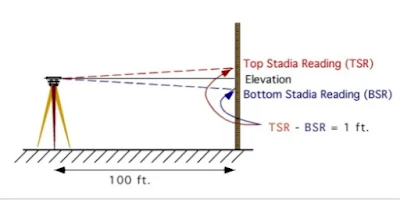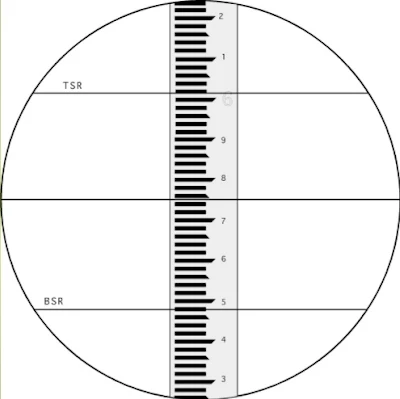How to Measure a Distance Using Dumpy Level or Theodolite or Transit?
Dumpy Level:
The dumpy level is an optical surveying leveling instrument consisting a telescope tube firmly secured in two collars fixed by adjusting screws to the stage by the vertical spindle.
The telescope of dumpy level can rotate only in a horizontal plane. Relative elevation of different points of a surveying land is determined with dumpy level.
Transit:
A telescopic device that can be used for measuring distances and horizontal and vertical angles.
Theodolite:
A special kind of transit that gives more accurate readings of angles than a standard transit.Can a dumpy level really be used to measure distances?
Yes, it can. And in this article I shall be detailing how this can be done.
How to use a dumpy level to measure distance.
A little-known trick that can be done with automatic (dumpy) levels is to measure distances. This is done by using the Stadia Lines seen through the telescope of the automatic (dumpy) level to measure a distance from the automatic (dumpy) level.
What are Stadia Lines?
The Stadia Lines are two horizontal lines which are on the reticle, one above and one below the crosshairs seen through the telescope of an automatic (dumpy) level. These Stadia Lines are set at a specific distance apart so that a factor can be applied to observations to enable the calculation of a distance from the automatic (dumpy) level.
How to use a dumpy level to measure distance. The Stadia Method.
Distance by stadia requires an instrument with stadia cross hairs.The distance between the stadia crosshairs is designed so that the divergence of the sights across the two stadia crosshairs is 1.0 feet when the instrument is 100 feet from the rod.
(Assuming an instrument stadia factor of 100.)
The difference between the TSR and BSR is called the stadia interval.
This results in the equation:
Advantages of Stadia:
- Works by line of sight. Not necessary to walk distance.
- Distances can be measured with the same setup used to record elevations.
Disadvantages of Stadia:
- Must have instrument with stadia crosshairs.
- May require multiple instrument setups.
Case-1:
Because SI = TSR - BSR,the more common equation is:
- For modern instruments the stadia factor (SF) is 100.
- What is the stadia distance for the illustration?
Case-2:
When I/2 stadia is used the elevation crosshair, and which ever stadia crosshair that can be read, is used.
Because this stadia interval is 1/2 of the standard interval, it is multiplied by two.
Horizontal Distance = {(TSR - Elev) x 2} x 100
Horizontal Distance = {(7.34 - 6.21) x 2} x 100
Horizontal Distance = 226 ft
Conclusion:
Full article on How to Measure a Distance Using Dumpy Level | Measuring Distance Using Stadia Method | Horizontal Distance by Stadia Method | What is Stadia in Surveying | What is Stadia Distance | What are Stadia Lines | Land Surveying | Advantages and Disadvantages of Stadia | What is Stadia Distance. Thank you for the full reading of this article in "QA QC Civil Engineering" platform in English. If you find this post helpful, then help others by sharing it on social media.
Full article on How to Measure a Distance Using Dumpy Level | Measuring Distance Using Stadia Method | Horizontal Distance by Stadia Method | What is Stadia in Surveying | What is Stadia Distance | What are Stadia Lines | Land Surveying | Advantages and Disadvantages of Stadia | What is Stadia Distance. Thank you for the full reading of this article in "QA QC Civil Engineering" platform in English. If you find this post helpful, then help others by sharing it on social media.





